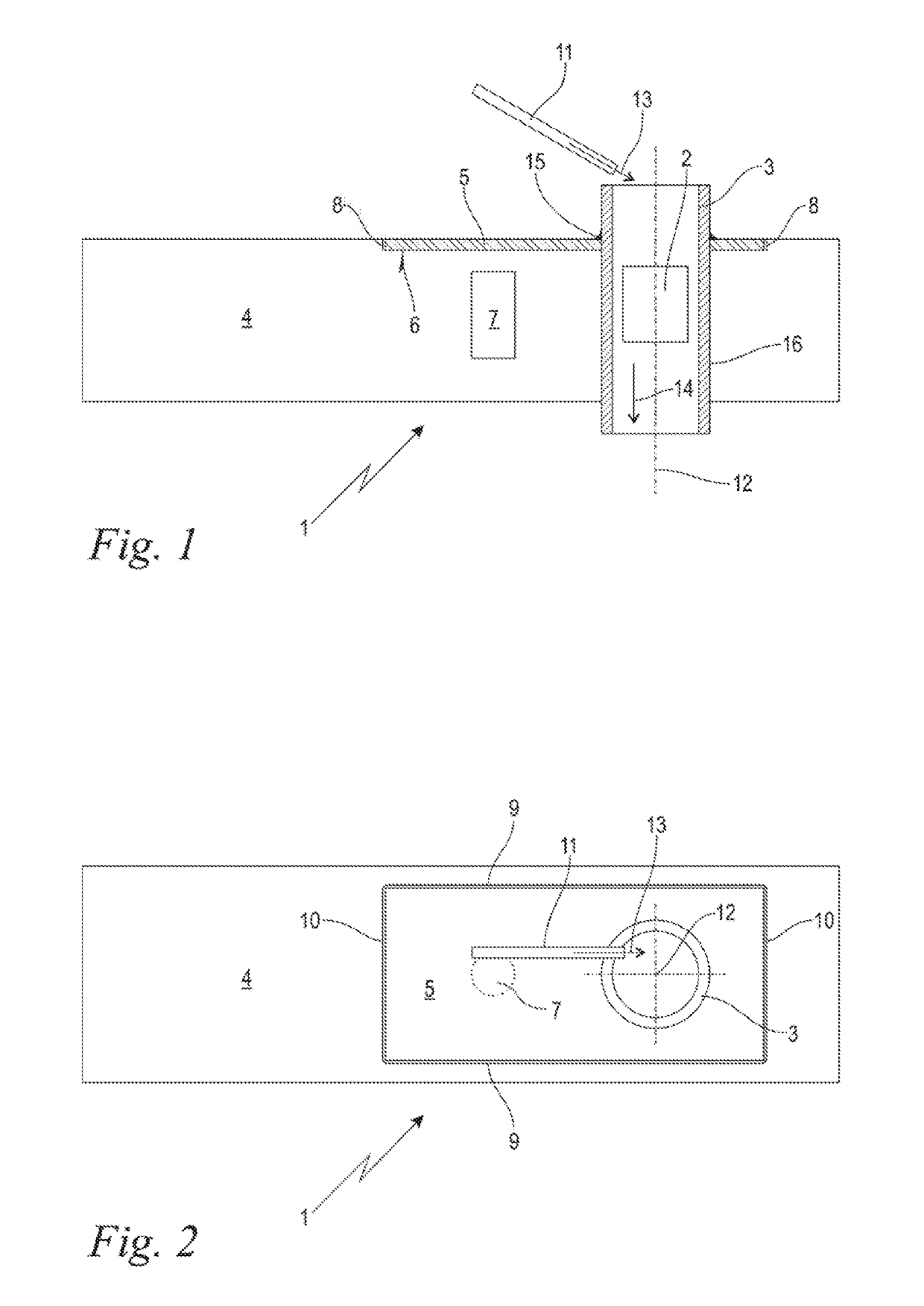Monitoring sensor for metered amounts of powder
- Summary
- Abstract
- Description
- Claims
- Application Information
AI Technical Summary
Benefits of technology
Problems solved by technology
Method used
Image
Examples
Embodiment Construction
[0015]FIG. 1 shows in a schematic longitudinal section representation a monitoring sensor 1 configured according to an embodiment of the invention for the mass determination of metered amounts of powder 2 only indicated schematically here. The metered amounts of powder 2 shown here are pharmaceutical powder plugs compacted into so-called pellets, which plugs have been previously metered and measured in a sliding dispenser in a previously known manner, and therefore not described here. The term amounts of powder 2 chosen here, however, includes in the scope of the disclosure loose, amorphous amounts of powder and also amounts of powder compressed into quasi-solids, such as pellets, tablets, or the like, especially from the pharmaceutical industry, but also from other industries such as for example from the food supplement industry. The metering may also occur in a roller dispenser, in a disk dispenser, via a pipette or the like, in a previously known manner. The monitoring sensor 1 i...
PUM
 Login to View More
Login to View More Abstract
Description
Claims
Application Information
 Login to View More
Login to View More - R&D
- Intellectual Property
- Life Sciences
- Materials
- Tech Scout
- Unparalleled Data Quality
- Higher Quality Content
- 60% Fewer Hallucinations
Browse by: Latest US Patents, China's latest patents, Technical Efficacy Thesaurus, Application Domain, Technology Topic, Popular Technical Reports.
© 2025 PatSnap. All rights reserved.Legal|Privacy policy|Modern Slavery Act Transparency Statement|Sitemap|About US| Contact US: help@patsnap.com

